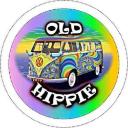Yahoo Answers is shutting down on May 4th, 2021 (Eastern Time) and beginning April 20th, 2021 (Eastern Time) the Yahoo Answers website will be in read-only mode. There will be no changes to other Yahoo properties or services, or your Yahoo account. You can find more information about the Yahoo Answers shutdown and how to download your data on this help page.
Trending News
When do you know you are pedaling too hard on a climb?
Which one comes first - The pain of the leg muscles, the breath, or the Heart rate?
I swear there are times when my legs feel OK but my heart was pounding like crazy. There are other times my legs give in first.
Bob, That's why I posted this question. I want to find that "first" indication to help me maintain that balance.
Hippie, I don't have knee pain while climbing. I was referring to leg muscles pain (Lactic acid build up). I am still new to this so I will also pay attention to discomfort on my knees and the pedal motion, and the angles I use, particularly when I stand up. I do have a 30 speed.
Soccer, I want to get better in anticipation and react when I go to a new route or go on to a new bike rally. There were times I pushed too hard at the beginning and never recover.
8 Answers
- Tex TLv 61 decade agoFavorite Answer
When your legs start to burn shift to a smaller gear, when your lungs start to burn or your heart wants to explode shift to a bigger gear. It can really be as simple as that.
On long steep climbs that are more than 5 or 10 miles long you may have to alternate between pushing and spinning and on grades greater then about 10% it may be impossible to maintain a high cadence. Once you blow up it can be difficult to recover, one trick is to swith to a big gear and rest a leg every fifth pedal stroke. So it would be pushing on pedal strokes 1, 2, 3, 4, and on 5 let your left leg float through the pedal stroke, and repeat for the right leg so you are resting your legs 10% of the time.
- 1 decade ago
The one post that really stands out is Mick's, and it is one sentence. "It's a mental thing where you think you're already done when you've got a little more in the tank.".
This is more true than you know, all the meters and training will not override your brain, when your mind says your done you are. The key is to know yourself and develop mental toughness, then when your legs or lungs are burning, mentally you can fight through it. Plus there is no rule that says legs go first or second, this can change from day to day. So while you are looking for an order of what come first I'll add a few thoughts,
HR, know your limits and that on a short fast climb it may lag the actual effort. HR also is effected by rest, over-training and other external factors..
Muscles, if you don't feel some burn you have more left, but keep in mind again if you go by a watt meter rest and fatigue effect what you will be able to do.
Breath, pollen, temp. and humidity are a few of the things that can make you feel like you can't get any air in, so be aware of the days weather conditions and how they can effect that days performance.
- SoccerreftooLv 71 decade ago
White
The heart rate is the best leading indicator that you are starting to 'stress'. But, getting your heart rate into the red zone is o.k..
I don't really ever find myself out of breath. If anything is to give out it would be my legs. But for me, the best way to climb has been the same for decades. 1) attack the head of the climb, and not the foot 2) maintain cadence and pedal pressure as long as possible 3) when you can no longer keep pedal pressure, keep cadence... when you can't keep cadence you are in trouble.... heads down and gut it up the rest of the way.
Soccerref
- Mick RossLv 41 decade ago
It depends on which you are weakest in. For most people it's gasping for breath, followed by a fast heart rate, eventually followed by strong muscle cramps. Frankly, if you can keep going, then you're not pedaling too hard.
I've never really heard of anyone having the problem of not knowing when you've gone too hard. Trust me, you're body will let you know in a myriad of ways. The bigger problem is generally not going hard enough. It's a mental thing where you think you're already done when you've got a little more in the tank. But generally, when you're done, you're done.
- How do you think about the answers? You can sign in to vote the answer.
- badbadleroybrownLv 61 decade ago
A power meter that displays watts is the absolute best... Second best is a heart rate monitor. Third is your 'perceived rate of exertion'. Heart rate is the best value/performance due to the inaccuracy of PRoE and the expense of power meters.
For a sustainable effort, like a long steady climb, you want to stay within about 60-70% of your max wattage, heart rate or a 6-7 on a scale of 1-10 for your perceived rate of exertion. If it's a short steep climb, you can up that to 70-80% and a 7-8 on your PRoE.
On climbs, particularly steep climbs, your heart rate will get up there and, for most non-pro riders, it's your cardio that slows you more than leg strength. Once you start to 'redline', there's really no way to cover but to step off, catch your breath, let your heart level out, and go again so it's important to back off BEFORE you find yourself hitting that redline heart rate.
Edit - I would have to disagree with Hippie on two fronts...
One, if you don't have some pain in your legs you simply aren't trying hard enough. I used to have a training buddy who was a former Marine and loved the old saying 'pain is just weakness leaving the body', lol. If you don't have that burn, it's time to get taller gearing!.. or find a bigger hill!
Two, this 70-90 rpm cadence number that people like to throw around is to be honest, complete garbage. For one thing, it's an absurd range that covers a huge degree of effort levels so it's too 'blanket' to actually mean anything realistic. Find what works for you... I'm typically most efficient when I maintain about 80rpm on climbs but have a buddy who I'm sure never tops 70 but can still crush me up climbs. Some riders are simply more efficient producing high power efforts over long periods than others, that's where others benefit from lower power/high cadence efforts... Lance Armstrong, for example, maintains something like 100rpm on climbing sections or over flats while his peers are tooling along at 70-80 or so rpm... on sections like time trials and flats or rolling hills he's at 110-120 where others are at maybe 85-95 or so. It's all about finding what works for you. That, and cadence will never save you from blowing yourself up on a climb... Monitor heart rate or power and you can keep yourself just under redline just about as long as you need to.
- OldHippieLv 71 decade ago
Unless you are climbing a really BIG hill, there should be no pain in the leg muscles. I'm ASSUMING you have at least a 21 speed bike - you never stated. You should always try to maintain that 70-90 cadence on the pedals. If you're getting pain in the knees, the saddle (seat) is most likely set too low or you are in too high of a gear. Links below.
- Anonymous1 decade ago
You need to find the balance between cadence and pedal pressure. Cadence for the heart and lungs and pedal pressure for the legs.







